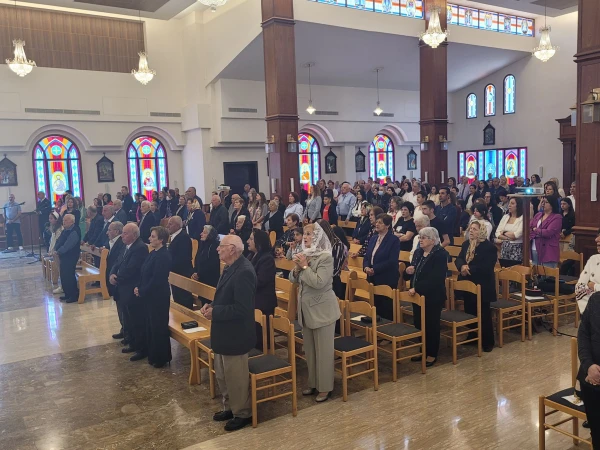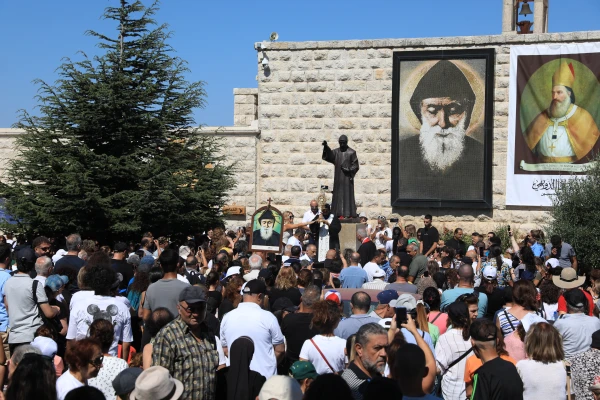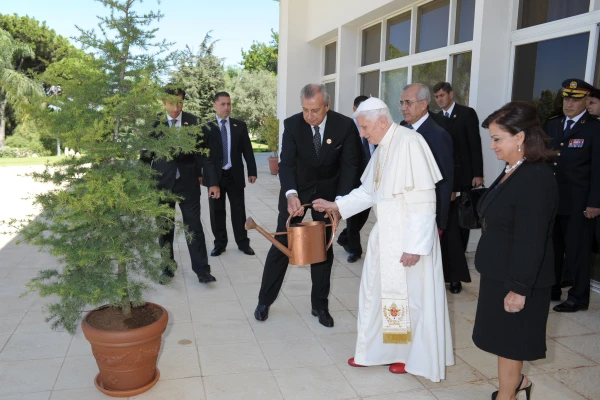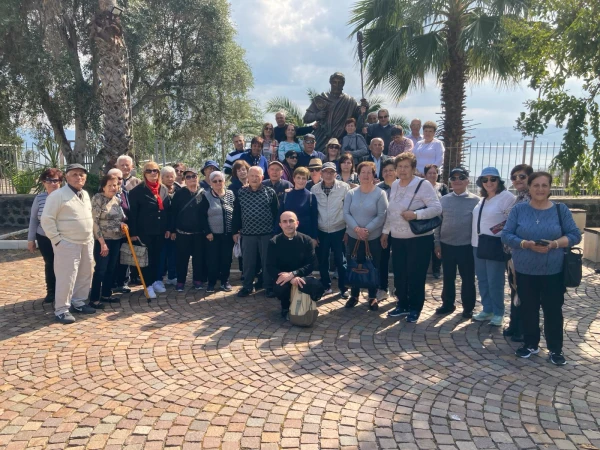ACI MENA, Oct 26, 2024 / 08:00 am
In 1989, Pope John Paul II issued an apostolic letter warning that “the disappearance of Lebanon would be one of the world’s greatest sorrows” and that saving it is “one of the most urgent and noble tasks” for the global community.
While Lebanon often makes headlines for its turbulent politics and military conflicts — including in recent days as tension has escalated between Hezbollah and Israel — its rich Catholic heritage, both past and present, is frequently overlooked.
Here are 10 important things to know about the Catholic faith in Lebanon:
1. The diversity of the Church in Lebanon
Despite its small size, Lebanon is home to 18 officially recognized religious sects. Within this diverse landscape, the Catholic Church holds a prominent place, comprising several distinct rites and communities that contribute to the nation’s spiritual heritage.
There are six main Catholic communities in Lebanon, each with its own unique history, liturgical traditions, and cultural heritage: Maronite, Melkite, Armenian, Syriac, Chaldean, and Latin Catholic Churches.
Recognizing Lebanon’s unique religious diversity, Pope John Paul II famously referred to Lebanon as “more than a country; it is a message.”
2. Lebanese Catholics by the numbers
The percentage of Christians in Lebanon is a topic of debate, with estimates varying. A commonly cited figure suggests that Christians make up about 34% of the population (between 1.5 million and 2 million), though there are concerns over the accuracy of these estimates due to the absence of official census data.
The largest Catholic group in Lebanon is the Maronite Catholic Church. According to the 2015 Annuario Pontificio, there are approximately 3.36 million Maronite Catholics worldwide. Significant communities are found in Argentina (about 720,000), Brazil (493,000), Mexico (156,000), and Australia (150,000).

3. An important political role in Lebanon
Catholics, particularly Maronite Catholics, play a significant political role in Lebanon due to the country’s unique confessional system, which allocates political power based on religious affiliation.
By the Lebanese Constitution, the president of Lebanon must always be a Maronite Catholic. And the 128 parliamentary seats are evenly divided between Christians and Muslims/Druze. Christians, including Maronites, Greek Catholics, and other sects, hold 64 seats, while the remaining 64 seats are reserved for Muslims (both Sunni and Shia) and Druze.
4. Persecution and political turmoil
Lebanese Christians have faced persecution throughout history, from the Mamluks, who destroyed churches and massacred Christians, to the Ottoman Empire, which orchestrated the great famine that killed a third of the population.
(Story continues below)
In more recent times, Christian leaders in Lebanon have faced targeted violence. The Lebanese Civil War (1975–1990) saw the assassination of key Christian figures like Bashir Gemayel (1982), the Maronite leader and president-elect who was killed for his role in opposing Syrian and Palestinian occupation. Many Christian journalists and intellectuals have also been assassinated in more recent years for their opposition to foreign influence.
5. Key historical role
Catholics in Lebanon have historically enjoyed unique autonomy in the Middle East, even during Islamic rule. Known for their strong attachment to freedom, they have consistently resisted systems of subjugation like dhimmitude (the status of non-Muslims under Muslim rule), preserving their independence and identity through centuries of change.
Maronites played a central role in resisting Ottoman control through diplomatic, military, and political efforts. And after World War I, the Maronite community under the leadership of Patriarch Elias Peter Hoayek pushed for the establishment of Greater Lebanon in 1920 under the French Mandate.
Patriarch Nasrallah Sfeir played a pivotal role in resisting the Syrian occupation of Lebanon. His leadership was a key factor in mobilizing both Christian and non-Christian Lebanese to challenge Syrian dominance, especially in the period leading up to the Cedar Revolution in 2005.

6. Land of the saints
Lebanon has been called the “Land of Saints” due to the numerous saints who have emerged from its history. The most prominent Lebanese saint is St. Charbel Makhlouf.
Moreover, monasticism has been a cornerstone of Christian life in the country for centuries. Monks and nuns, living in isolation in the mountains of Lebanon, preserved Christianity during difficult periods.
7. A strong relationship with the Vatican
The Maronite Church originated in the late fourth century around St. Maron. By the eighth century, the Maronites had moved to the mountains of Lebanon, living in isolation. During the Crusades, they established connections with the Latin Church and in 1182 formally united with Rome.
In 1584, Pope Gregory XIII established the Maronite College in Rome. Graduates of the college helped spread knowledge of the Eastern Christian tradition in Europe and improved the education of the clergy in Lebanon.
Many Lebanese Catholics have played important roles at the Vatican. For example, Youssef El-Semaani was the head translator and custodian of the Vatican Library.
Lebanese Catholics also contributed significantly to Vatican II. For instance, the Melkites requested the creation of a permanent dicastery in the Roman Curia for ecumenical questions, reflecting their ongoing involvement in promoting unity within the Church.

8. The language of Christ preserved
Lebanese Christians, particularly the Maronites, have played a key role in preserving Aramaic, the language spoken by Jesus Christ. This ancient language has been safeguarded through the Maronite liturgy, which still includes Syriac-Aramaic prayers and hymns.
9. Catholic education — a cornerstone of Lebanon’s development
Catholic schools in Lebanon have been pivotal in the country’s educational and cultural development. These schools, run by various Catholic orders such as the Jesuits, Franciscans, and Maronite clergy, offer high-quality education rooted in Christian values. Notable institutions like St. Joseph University (founded by the Jesuits in 1875) and Notre Dame University-Louaize are known for their academic excellence.

10. Catholic pilgrimages — exploring Lebanon’s holy sites
Lebanon offers a wealth of pilgrimage options, including the Qadisha Valley, a UNESCO World Heritage site, where Maronite monks have lived in isolation for centuries.
Annaya, where St. Charbel is buried, is a major pilgrimage destination renowned for healing and miracles.
Another popular site is Our Lady of Lebanon in Harissa, where a towering statue of the Virgin Mary overlooks the Mediterranean.
This article was originally published by ACI Mena, CNA’s Arabic-language news partner, and has been translated and adapted by CNA.






